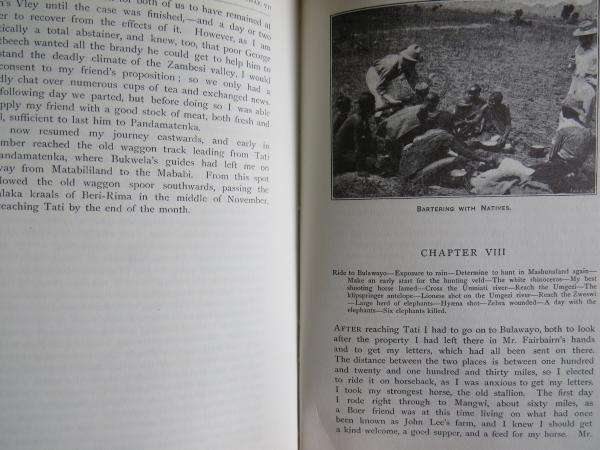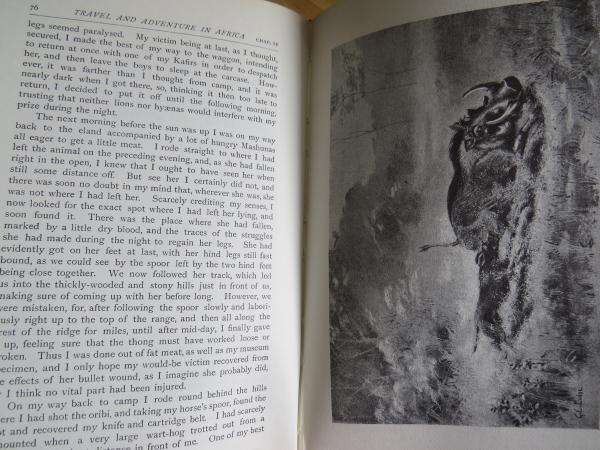







Travel and Adventure in South-East Africa - F. C. Selous
Check my rate
| Main centres: | 1-3 business days |
| Regional areas: | 3-4 business days |
| Remote areas: | 3-5 business days |








| Main centres: | 1-3 business days |
| Regional areas: | 3-4 business days |
| Remote areas: | 3-5 business days |
Condition: Good. DJ is tatty around the edges with some creases and small tears. Book has one name and address on inside of first front end page, otherwise clean and tight. Some shelf wear on board edges. Foldout map present and undamaged.
Format: Hardcover with DJ
Published: 1972 (Books of Africa)
Pages: 477
ISBN:
SELOUS, most renowned of Rhodesias big game hunters, arrived in Matabeleland in 1872, some 18 years before the Pioneer Column for which he acted as guide. His first eight years as a professional elephant-hunter are recounted in the wildlife classic, (Vol. 14, Rhodesiana Reprint Library). Travel and Adventure in South-East Africa appeared in 1893 and covers the eleven-year period after the publication of Hunters Wanderings (1881).
By then he had travelled the region widely: from the Transvaal in the south, across the Zambezi to the Kafue in Zambia, and from the edge of the Kalahari in the west to the Mocambique coast in the east. He had given up the ivory trail and turned collecting wild-life specimens hr museums overseas. As he explored, he mapped the territory, studied the African tribes, observed the fauna and flora, met with other travellers, hunters, prospectors and missionaries, and pondered the political future of this undeveloped `far interior of South Africa.
Against this rich background he has painted a colourful and impressive canvas. Few authors have left so detailed a picture of the pre-Pioneer Rhodesian scene in all its aspects. In the hands of a less skilled narrator his book might have been no more than a good work of reference but Selous is foremost an engaging story-teller - the undoubted popularity of his books testifies to this.
To mention his excellent lion stories is to single out only some of many first-rate hunting experiences. He was himself hunted when travelling among the Mashukulumbwi tribe north of the Kafue river. Were it not for his hardihood, resourcefulness and splendid bushcraft he would not have survived the 300-mile walk back to his wagons. But live he did, to continue rubbing shoulders with danger and adventure, to serve in the Matabele War and. the Rebellion and, through his writings, to enrich our historical heritage.